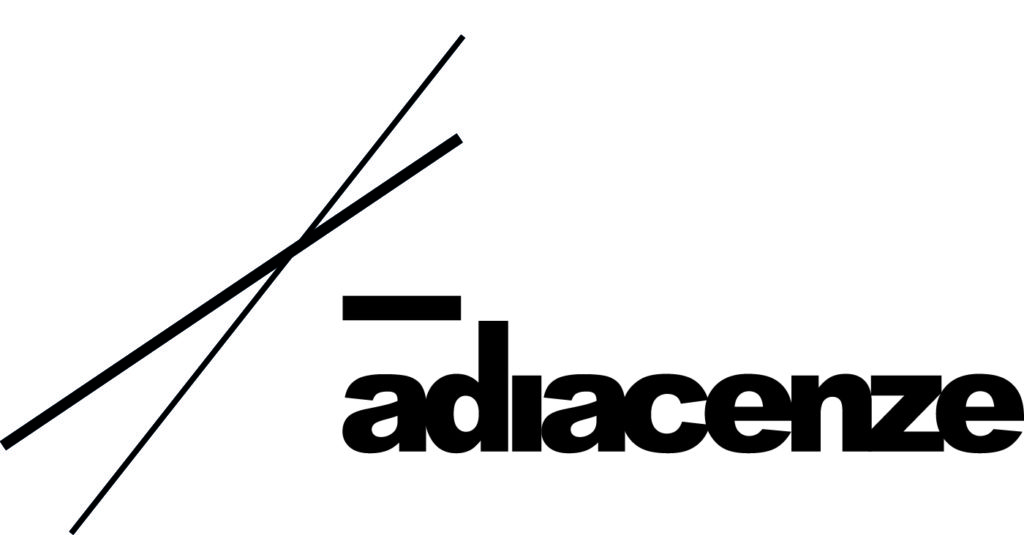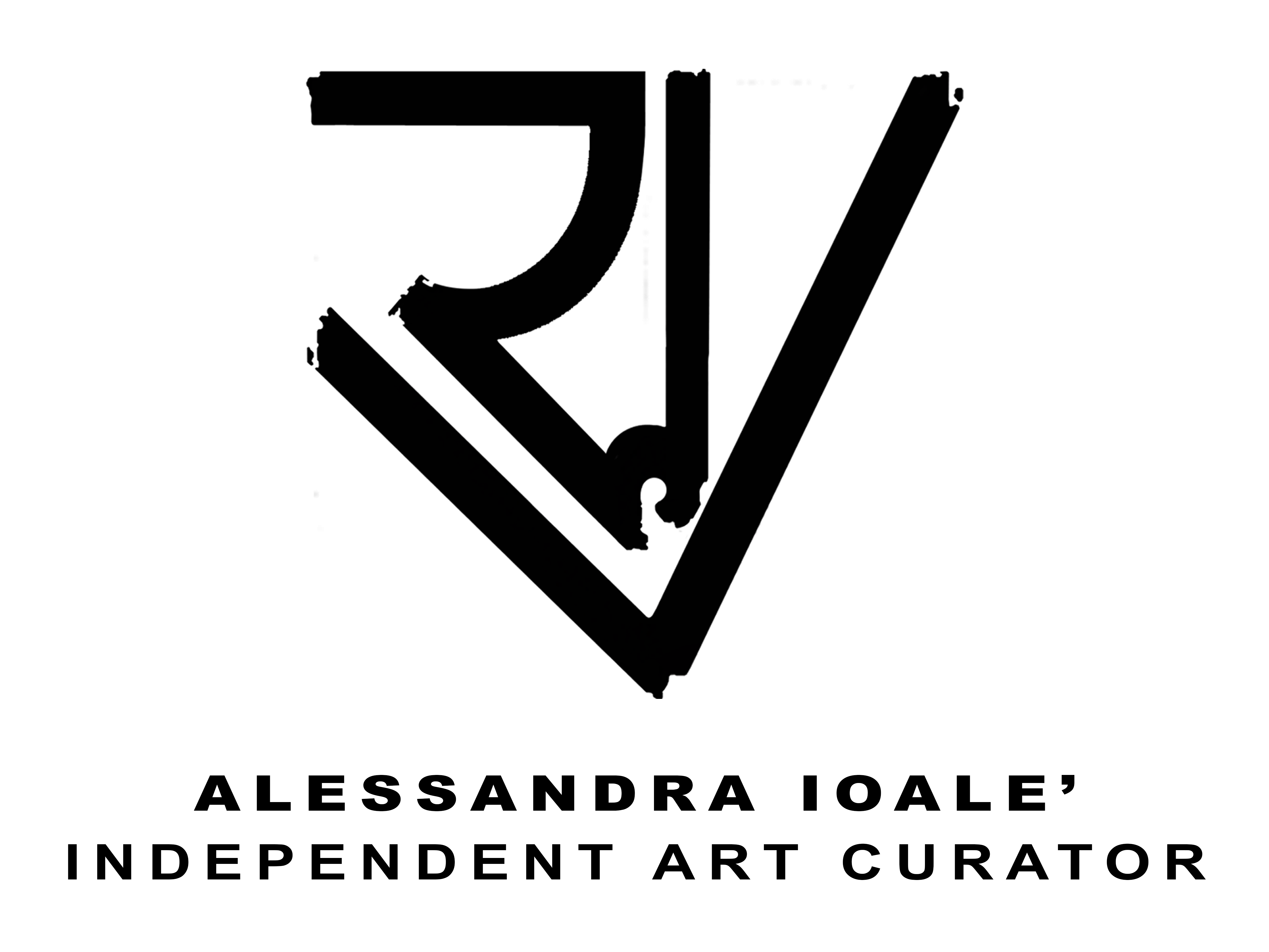Venerdì 1 febbraio alle ore 19.30, nell’ambito di ART CITY Segnala 2019 in occasione di Arte Fiera, Adiacenze ha inaugurato la prima personale italiana di Guido Segni “Fino alla fine” a cura di Alessandra Ioalè e Marco Mancuso (Direttore e fondatore di Digicult).
FINO ALLA FINE. Quando la fine giustifica il medium
La tecnica, affermava Beuys, deve piegarsi e adattarsi a ciò che interessa l’artista e la creazione artistica sta essenzialmente nel fare. Al giorno d’oggi, le parole “tecnica” e “fare” assumono però nuove sfaccettature, specialmente quando le associamo alla pratica d’arte online. In Guido Segni coincidono da sempre con la programmazione di software e rielaborazione del materiale riversato e archiviato ogni giorno sul web, operando una rilettura critica dei protocolli e dei servizi forniti dalle principali piattaforme social e dai più conosciuti applicativi automatizzati in rete. Quella di Segni è una ricerca artistica segnata da domande sul rapporto tra creazione e temporalità, sull’obsolescenza tecnologica, sul futuro dell’opera d’arte in relazione all’elemento autoriale, alla sua archiviazione e riproduzione, nonché al rapporto con il pubblico che ne fruisce. Una ricerca recentemente influenzata dal pensiero di Nick Srnicek e Alex Williams[1], che auspicano il raggiungimento della piena automazione per liberare il tempo dal lavoro e dalla produzione, elementi di cui la nostra società è ossessionata. Il concetto di tempo diventa così materia di indagine per l’artista e la sua pratica si sviluppa – soprattutto negli ultimi anni – in una attenta sperimentazione multidisciplinare, nella materializzazione di opere in rete, che diventano tangibili e nella programmazione di algoritmi per l’automazione della creazione artistica online/offline. Da algoritmi semplici, per un’automazione primaria, cui si riferiscono le opere tra il 2013 e il 2017, si osserva nell’artista un graduale passaggio all’utilizzo di algoritmi più complessi, in cui si sperimentano reti neurali per un’automazione avanzata, per i progetti concepiti nell’ultimo anno di attività.
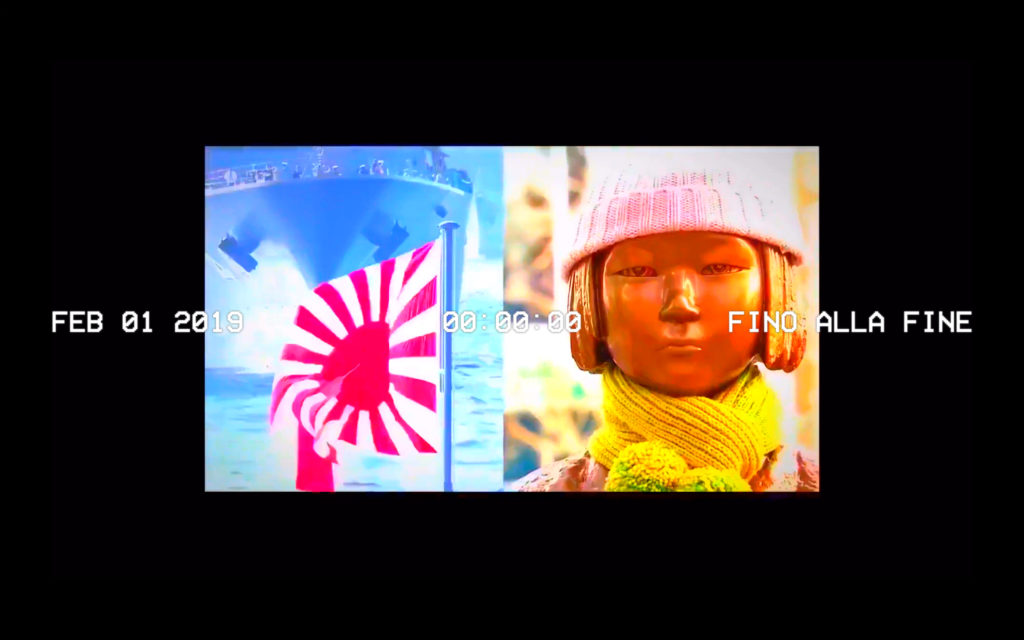
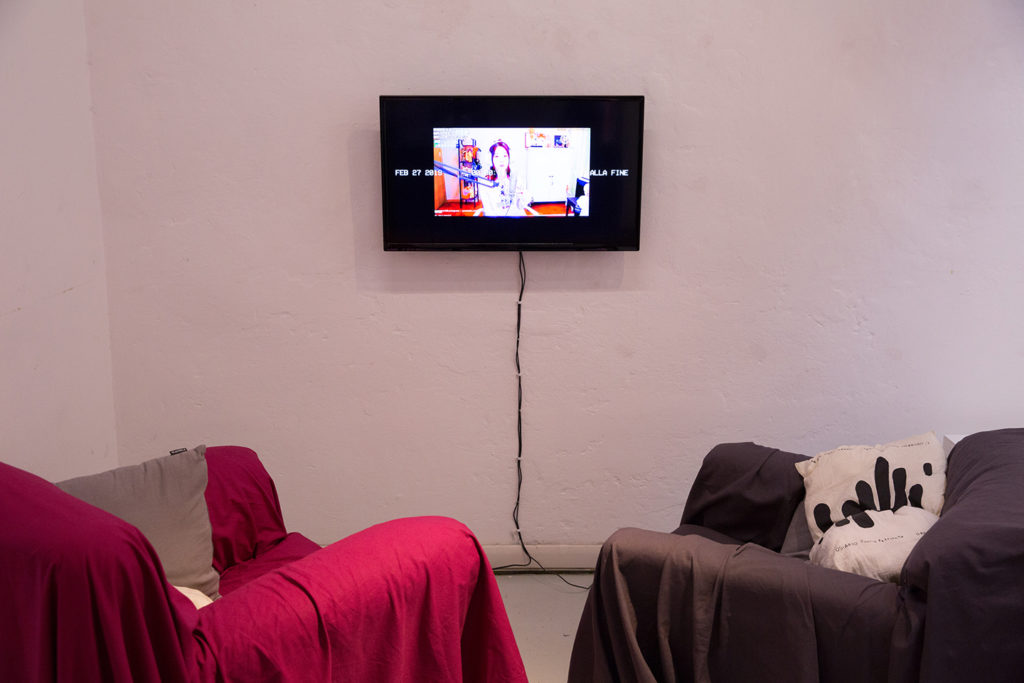
Nella mostra “Fino alla fine” – dall’1 febbraio al 16 marzo 2019 presso gli spazi di Adiacenze a Bologna, a cura di Alessandra Ioalè e Marco Mancuso – Guido Segni espone lavori che declinano il fattore tempo come spazio di sperimentazione, creazione e verifica dell’opera, della sua fruizione, del suo evolversi nel tempo. Da qui il titolo della mostra, che coincide con quello dell’opera Fino alla Fine (2018), che per paradosso non ha una vera e propria conclusione, ma prosegue in eterno, fino alla fine del tempo, o più prosaicamente della tecnologia che lo produce. L’opera è difatti un video generato da un algoritmo, che seleziona e assembla ogni giorno i segmenti dei primi 25 fotogrammi corrispondenti al primo secondo di ogni video caricato su YouTube. Un flusso potenzialmente infinito e ipnotico di immagini prodotte da tutti gli utenti del più diffuso sistema di video sharing del mondo.
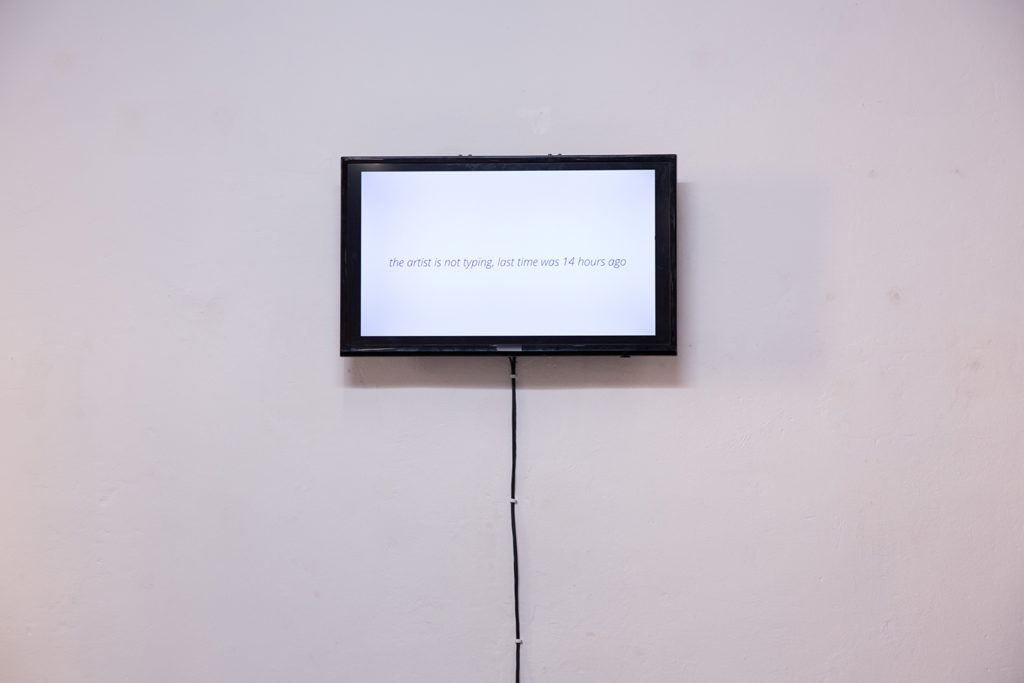
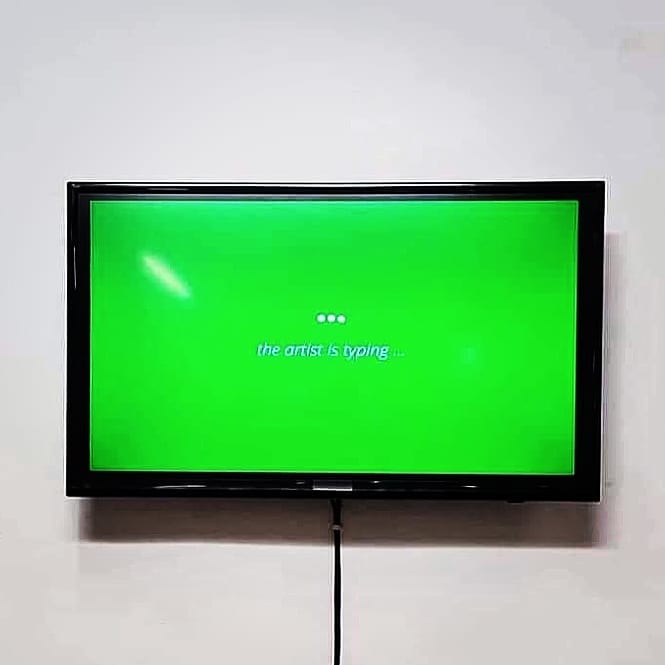
The artist is typing (2016), invece, è un’opera che pone l’accento contemporaneamente sul “tempo di produzione” e sul “tempo di attesa”, rivelando al pubblico nello spazio espositivo la presenza immateriale dell’artista, la sua essenza effimera nel momento in cui “sta scrivendo”, dalla tastiera del suo pc, un testo relativo a un suo lavoro, ma anche una mail privata, una lettera d’amore, un ordine su Amazon, un pezzo di codice Html o persino una ricerca su Google. Il lavoro artistico è un software, elemento digitale per sua stessa natura, che rivela la corporeità di Segni nel momento in cui diventa “oggetto” in un monitor, mostrando la scritta “the artist is typing” e la classica icona dei tre pallini in movimento, caratteristica di quel tempo “di attesa”, prima di ricevere un messaggio, tipico dei più comuni sistemi di messaggeria istantanea. Nel momento in cui l’opera in mostra si confronta con il fruitore, questo diventa il potenziale destinatario del messaggio, attivandosi in lui lo stato di attesa e di curiosità per qualcosa che può manifestarsi dà un momento all’altro. Una condizione ambivalente in cui tutti noi ci immergiamo ogni volta che interagiamo per mezzo di un sistema di chat: ciò che per l’artista/mittente è “tempo di produzione”, per il fruitore/destinatario diventa “tempo di attesa”.
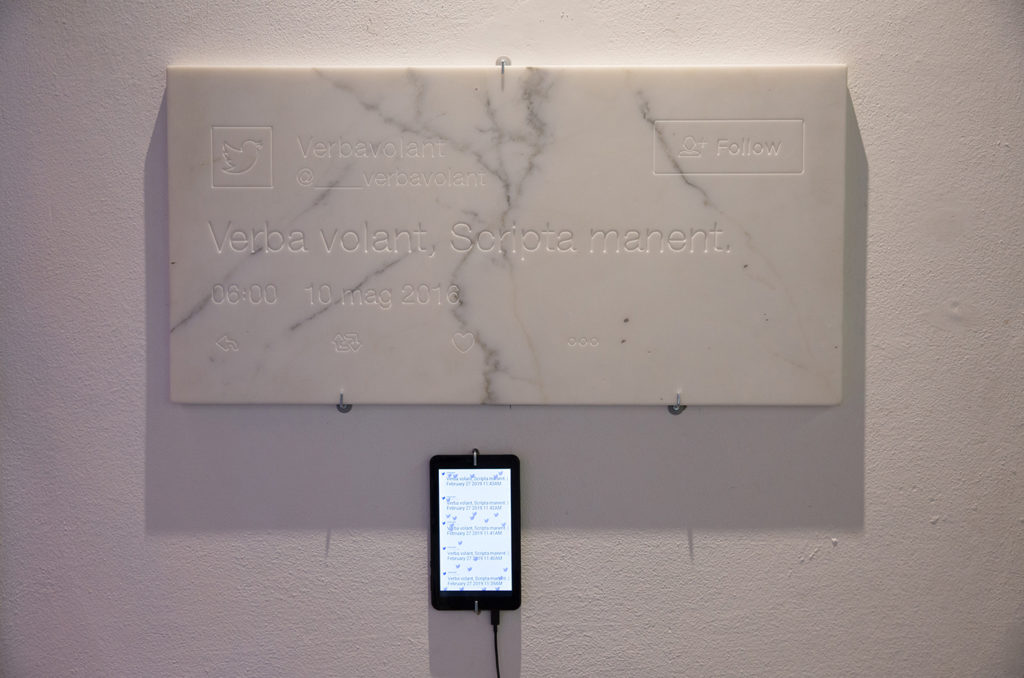
Verba volant, scripta manent (2017) è l’opera che rilegge il concetto di “tempo della memoria” nell’era effimera dei media digitali, mettendo a confronto l’attimo fuggente e la natura “numerica” di un messaggio in un Tweet con il materiale simbolo dell’eternità temporale della parola: il marmo. Reinterpretando e riattualizzando le tradizionali tecniche di incisione, grazie all’uso di una macchina a controllo numerico, l’artista, nella materializzazione della schermata di Twitter con la scritta “verba volant” scolpita su una lastra di marmo di Carrara come una vera e propria epigrafe, si riappropria di quella forma di “tramandamento” su supporto non deperibile di un testo, elaborando un mélange che unisce la tradizione classica con quella moderna fatta di elementi grafici, dallo stile iconico, e frasi sintetiche dal registro ironico tipici del linguaggio web.
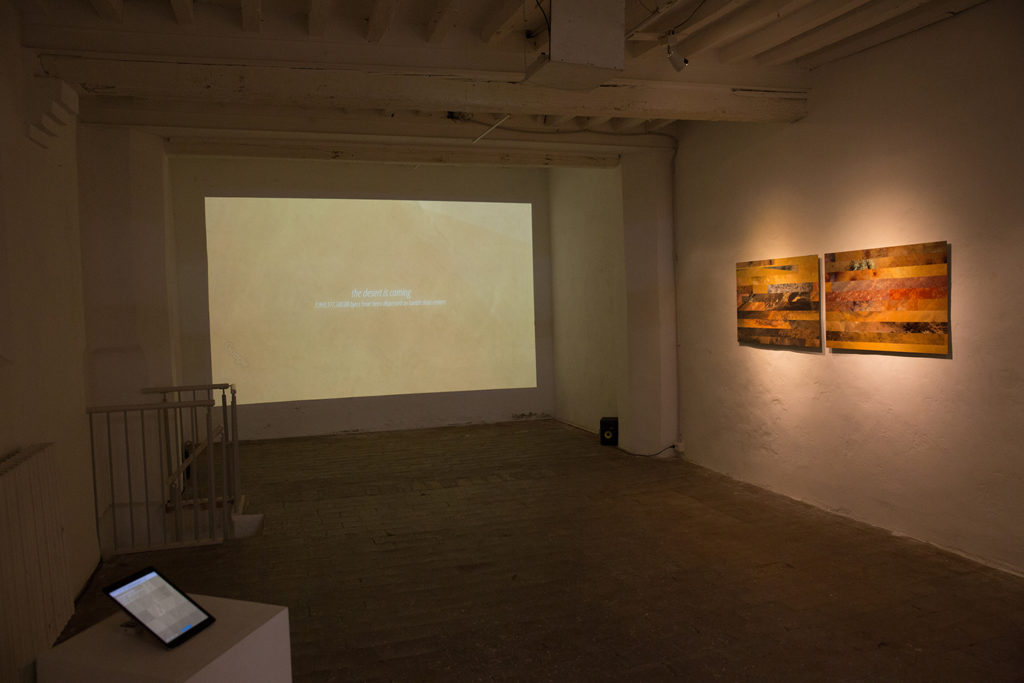
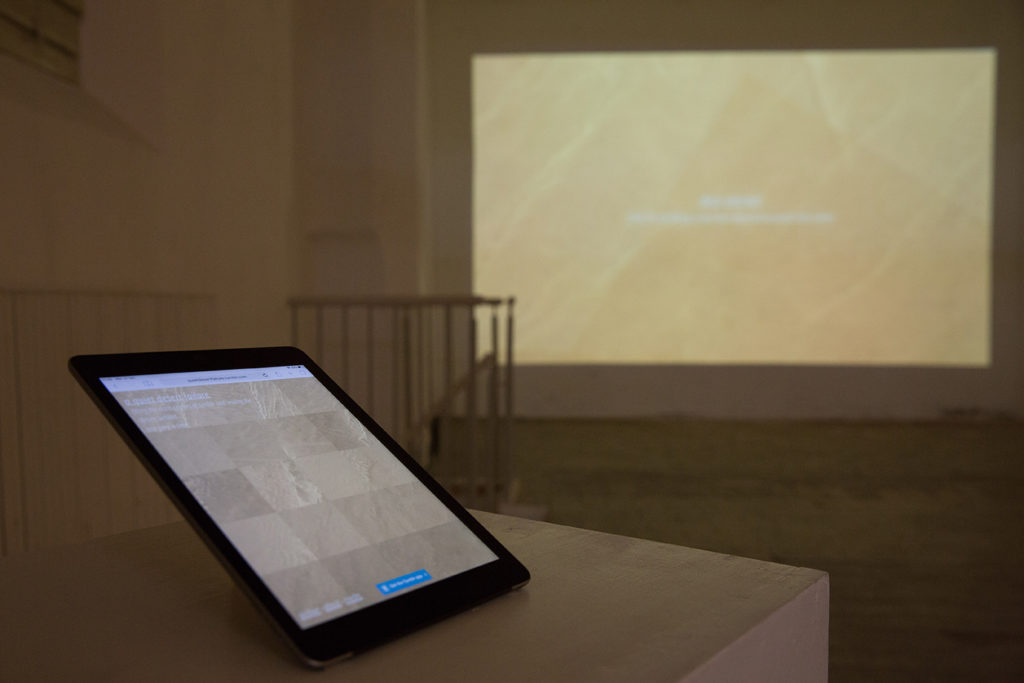
In A quiet Desert failure (2015) Guido Segni sfida l’incertezza del futuro tecnologico, la probabile obsolescenza tecnica di protocolli, interfacce, codici e strutture di Rete in relazione alla sopravvivenza di un’opera d’arte online, ponendosi la domanda: cosa succederà alla mia creazione con il passare del tempo? A quiet Desert failure è una performance algoritmica iniziata nel 2013, un sistema automatizzato che da cinque anni posta e archivia su un apposito profilo Tumblr un’immagine satellitare di una area definita del deserto del Sahara, ogni 30 minuti, con lo scopo di mappare, entro cinquant’anni, l’intero colosso di sabbia conosciuto come il più vasto deserto caldo del pianeta. Su tutto il lavoro, pesa l’incognita che i server di Google, l’archivio di Tumblr o la stessa rete Internet durino abbastanza per vederne il completamento o, in caso contrario, saggiarne il fallimento. L’artista ci permette di verificare sia il cambiamento della realtà oggettiva, catturata attraverso il filtro dell’occhio satellitare, sia la trasformazione dell’opera nel tempo, che coincide con la modificazione della zona geografica presa in esame. La performance algoritmica è l’opera d’arte, l’atto nel tempo, di cui le stampe prodotte non sono altro che tracce o documenti destinati a imperitura memoria.
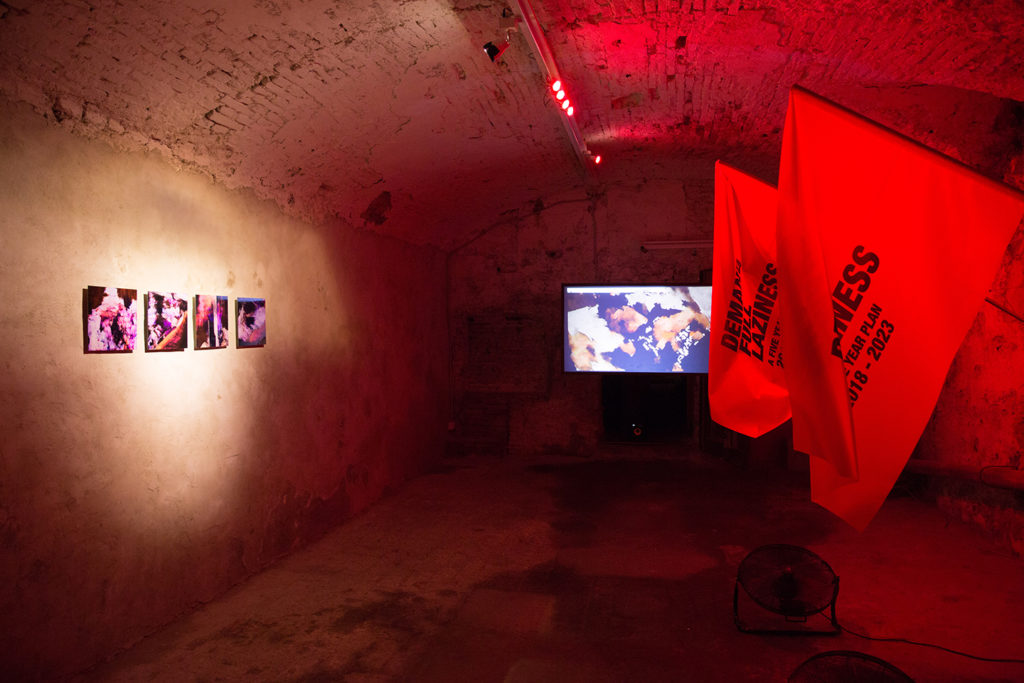
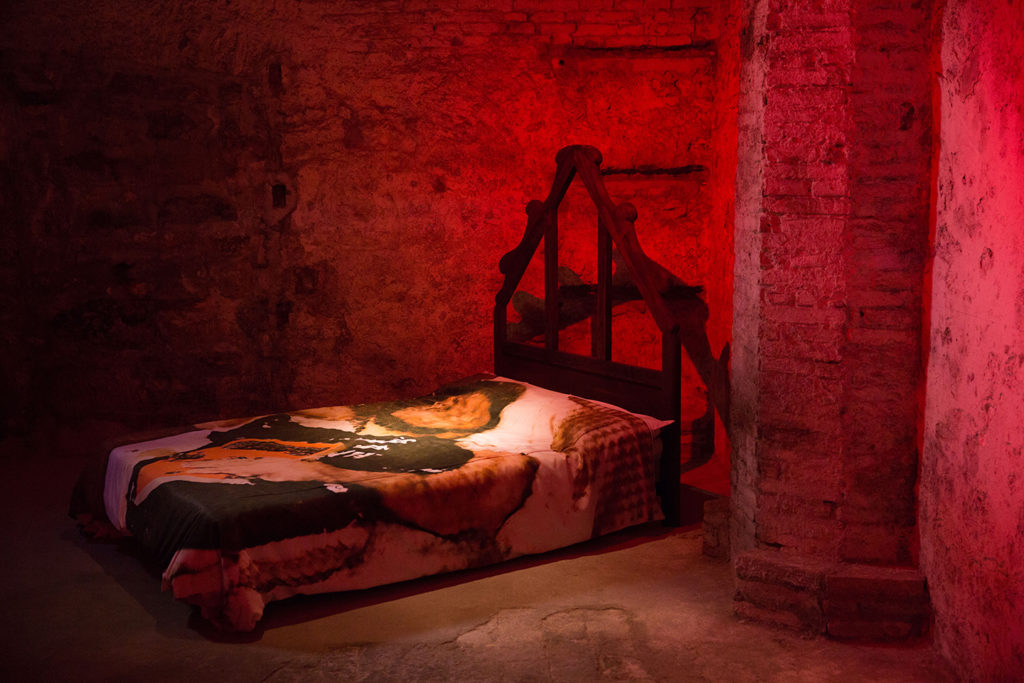
Da ultimo, il progetto multidisciplinare Demand full Laziness (2018-2023) si focalizza sul contrasto tra tempo “perso” e tempo “operativo” esaltando il concetto di pigrizia e ponendosi come una rivendicazione del diritto all’ozio tale da contrapporsi all’ossessione del lavoro salariato, che l’uomo ha paura di perdere con l’avvento delle intelligenze artificiali, del machine learning e della piena automazione dei processi. La pigrizia diventa il pretesto per parlare e rivalutare in senso positivo il concetto di automatismo e, nel tempo-contesto del progetto, si declina il concetto di “tempo di sperimentazione” dei diversi tipi di processi computazionali applicati alla creazione artistica, verificando come e quanto una macchina sia in grado di ritrarre la realtà attorno a sé. Demand full Laziness è un ennesimo atto performativo che Guido Segni fa compiere alla sua macchina, un piano quinquennale di produzione automatizzata da un sistema algoritmico in deep learning capace di osservare il contesto che lo circonda e reinterpretarlo esteticamente, esplorando nuove possibili relazioni tra lavoro e tempo libero, tra gesto artistico e produzione digitale. Gli output, ovvero le opere prodotte, sono prove dell’atto cognitivo dell’algoritmo, secondo un mutuo processo di emancipazione: quello della macchina dal suo creatore e quello dell’artista dal lavoro di produzione materiale. Immagini, oggetti, video, suoni, sono distribuiti nello spazio espositivo e potenzialmente in vendita, acquistabili da collezionisti, feticisti dell’automazione e supporter del progetto, per contribuire quindi al Patreon dell’artista che “nulla ha fatto” se non riposare sul proprio letto.
Tutti i progetti in mostra dimostrano che per Guido Segni, liberare il lavoro di creazione artistica dal concetto di tempo, grazie all’automazione algoritmica, significa assicurare un futuro alla propria opera, la quale può perpetuarsi ben oltre la capacità di sopravvivenza fisica dell’artista stesso. Anche se l’incognita dell’obsolescenza tecnica incombe, egli suggerisce un ritorno alla funzione primaria della tecnologia, troppo spesso dimenticata e demonizzata dai sistemi sociali ed economici del nostro contemporaneo postmoderno.
Testo critico di Alessandra Ioalè e Marco Mancuso
ENGLISH VERSION
TILL THE END. When the end justifies the medium
According to Beuys, the technique is meant to bend and to adapt to the interests of an artist, and the artistic creation mainly consists of making. Nowadays the words “technique” and “making” are taking on new meanings, especially when one considers their relation to the practices of online art. In his work Guido Segni uses (and always have) the following techniques: software programming and reusing the materials that appear and are being archived on the Internet every day by means of critical re-interpretation of protocols and services offered by the main social media platforms and by the most well-known automated applications on the Internet. In his artistic research Segni is interested in such issues as the relationship between creation and temporality, obsolescence of technology, the future of an artwork in relation to the authorship, the processes of archiving and reproducing a work of art as well as the relationship it forms with a spectator. Recently the artist’s research has been influenced by the ideas of Nick Srnicek and Alex Williams.[1] The authors express a hope in achieving complete automation that could allow us to liberate our time from work and production, the two elements our society is obsessed with. This is how the concept of time has become a subject of the artist’s research. His practice takes form (and it has especially during the past few years) of thorough multidisciplinary experimentation, expressed through materialization of the artworks, that become tangible, on the Internet and through programming of automation algorithms aimed at artistic creation online/offline. One can observe a gradual transition in Segni’s research from simple algorithms, aimed at primary automation, used for the works created between 2013 and 2017, towards more complex algorithms that allow the artist to experiment with neural networks in order to develop more advanced automation, an element present in the works created during last year.
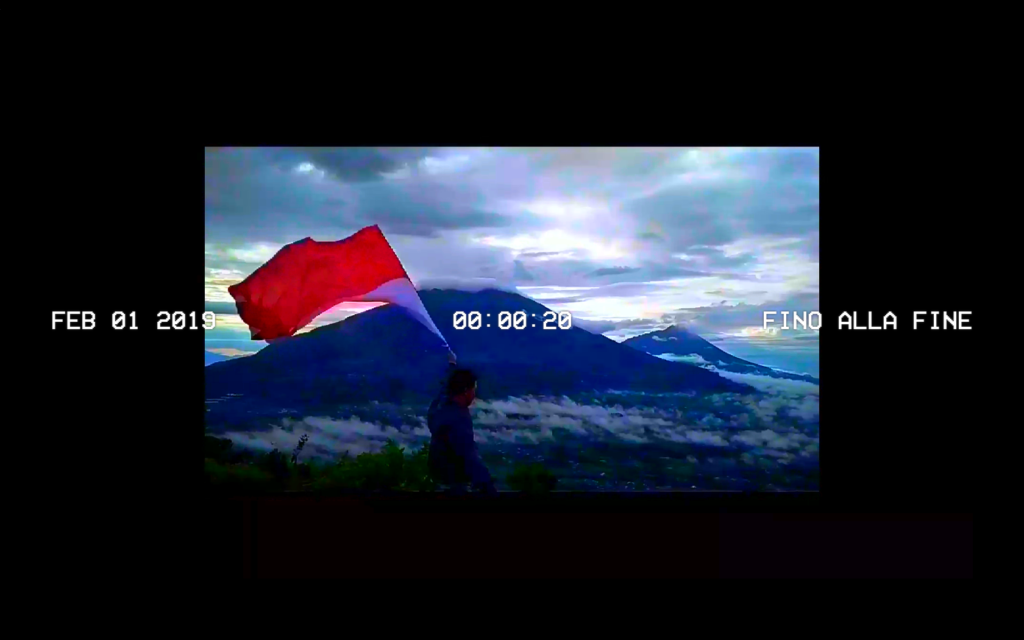
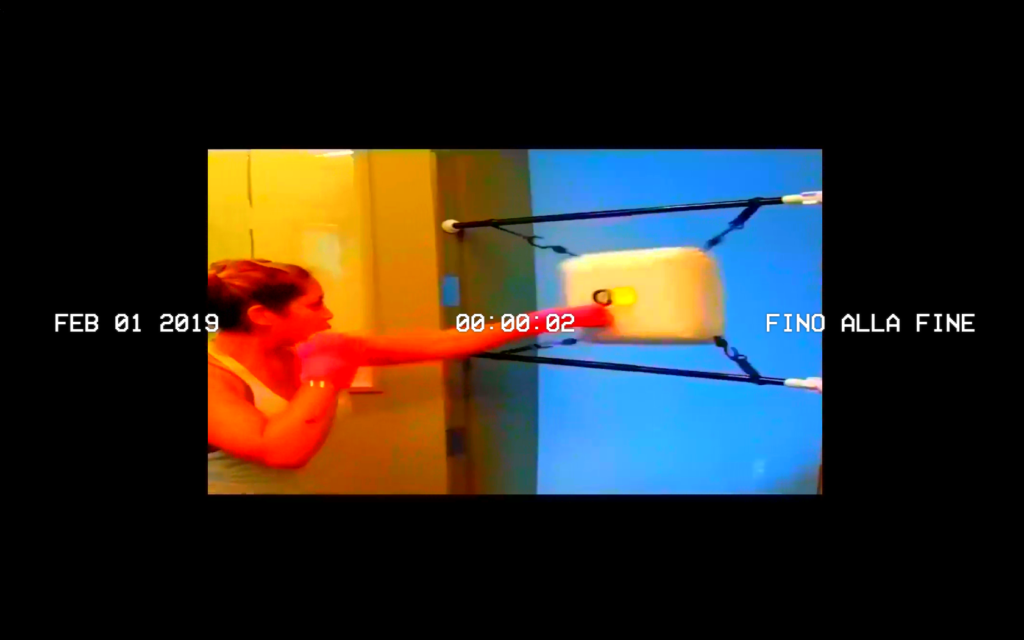
The show Till the End, curated by Alessandra Ioalè and Marco Mancuso, will take place in the spaces of Adiacenze in Bologna between the 1st of February and the 16th of March 2019. In the show Guido Segni exhibits works in which the element of time is understood as a space for experimentation, creation and testing of a work of art, its fruition and its evolution in time. The title of the exhibition corresponds to the title of one of the works, Fino alla fine (Till the End) (2018), a work that in a paradoxical way does not really have a true conclusion, but goes on forever, until the end of time or simply until the end of technology that produces the work of art. The work is a video generated by an algorithm which every day selects and assembles segments of the first 25 photograms corresponding to a first second of each video uploaded on YouTube. The video presents a potentially infinite and hypnotic flow of images produced by all the users of the most popular system of video sharing in the world.
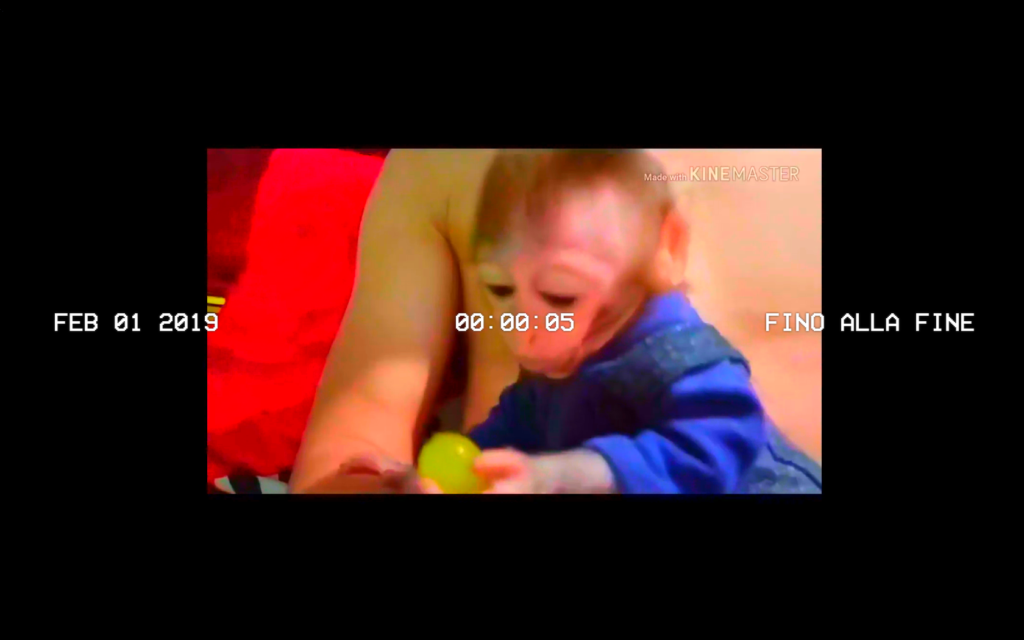
The artist is typing (2016) is a work that simultaneously emphasizes the “production time” and the “waiting time” and reveals immaterial presence of the artist in the exhibition space to the public, his ephemeral essence represented by the moment in which the artist “is writing” a text about his work on the keyboard of his computer, an email or a love letter or simply is placing an order on the Amazon, writing a piece of a Html code or doing a search on Google. The artist’s work is a software, a digital element by its very nature, that reveals Segni’s physicality when he becomes an “object” in the monitor, by showing a writing “the artist is typing” and a typical symbol of three moving dots, representing the “waiting time”, the time before we receive the message, typical for the most common systems of instant messaging. Once the work is confronted by a spectator, the spectator assumes a role of a potential recipient of the message and has a feeling of anticipation and curiosity towards what can occur at any moment. The work expresses that ambivalent condition that we all become part of whenever we interact through any chat system: “production time” for the artist/sender corresponds with the “waiting time” of a spectator/recipient.
Verba volant, scripta manent (2017) is an artwork in which the artist re-interprets the concept of “the time of memory” in the ephemeral age of digital media, by creating a contrast between a fleeting moment together with the “numerical” nature of a Tweet and marble, a material that symbolizes temporal eternity of a word. The artist re-interprets and updates the traditional techniques of engraving, uses a numerical control machine and carves a screenshot of Twitter with “verba volant” written on it on a slab of Carrara marble, as if it were an actual inscription. The artist takes possession of that form of “shifting” the text onto a non-perishable medium and creates a combination that unites classic tradition and the modern one consisting of graphic elements, iconic style and synthetic ironic phrases, typical of the language used on the Internet.
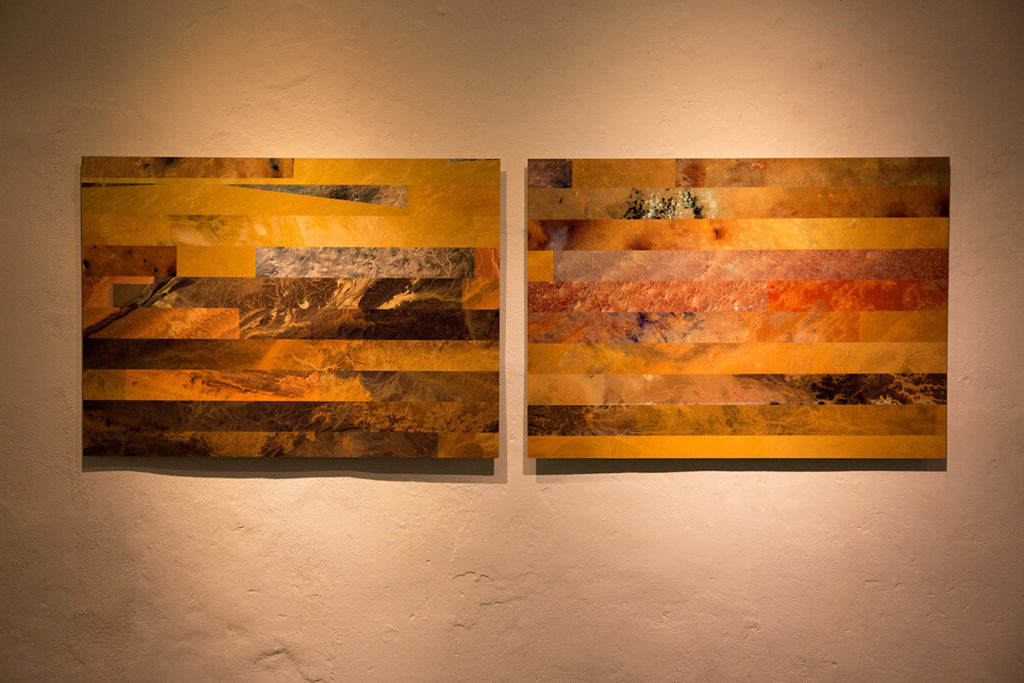
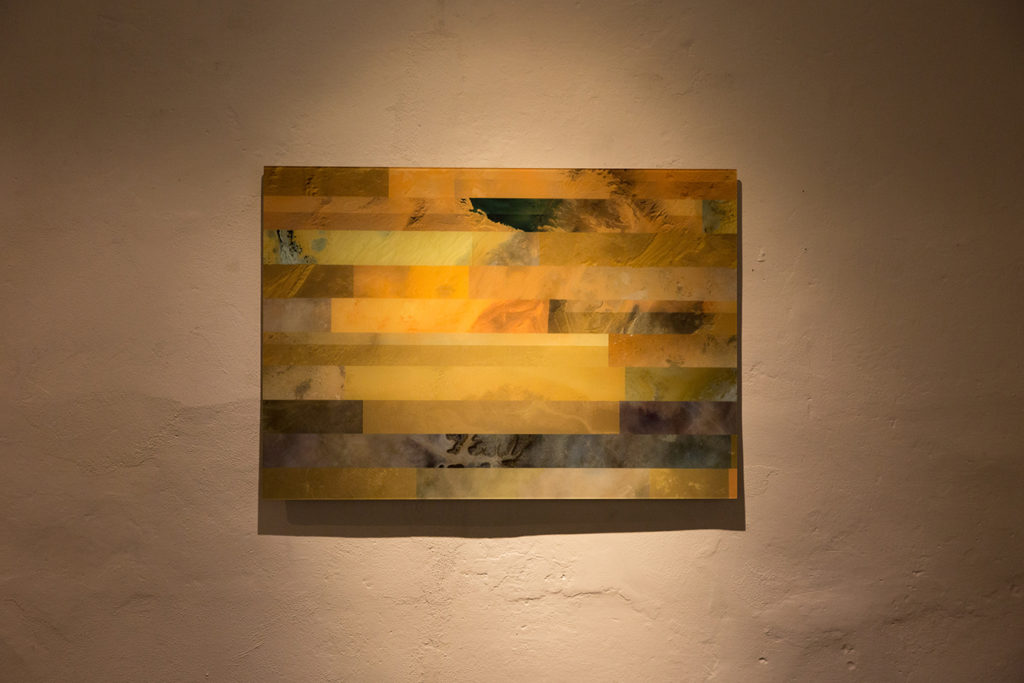
In his work A quiet Desert failure (2015) Guido Segni reflects on the uncertainty of technologic future, on the possible technical obsolescence of protocols, interfaces, codes and structures on the web in relation an artwork existing online. The artist asks himself: what will happen of my creation in time? A quiet Desert failure is an algorithmic performance that started in 2013, an automated system that for five years now has been posting and archiving a satellite image of a certain area of the Sahara Desert every 30 minutes on a Tumblr profile, an operation aimed at mapping, within fifty years, the entire territory of sand representing the planet’s biggest hot desert. One thing that is uncertain about the work though is whether Google servers, Tumblr’s archive and the Internet in general would last long enough for the work to be completed or, on the contrary, to fail. The artist gives us a chance to observe both the transformation of objective reality, captured using satellite’s gaze as a filter, and the transformation of the work over time, which corresponds to alteration of the geographical area that the artist chooses to examine. This algorithmic performance is an artwork, an action in time, the prints of which are nothing but the traces or documents designed to become everlasting memory.
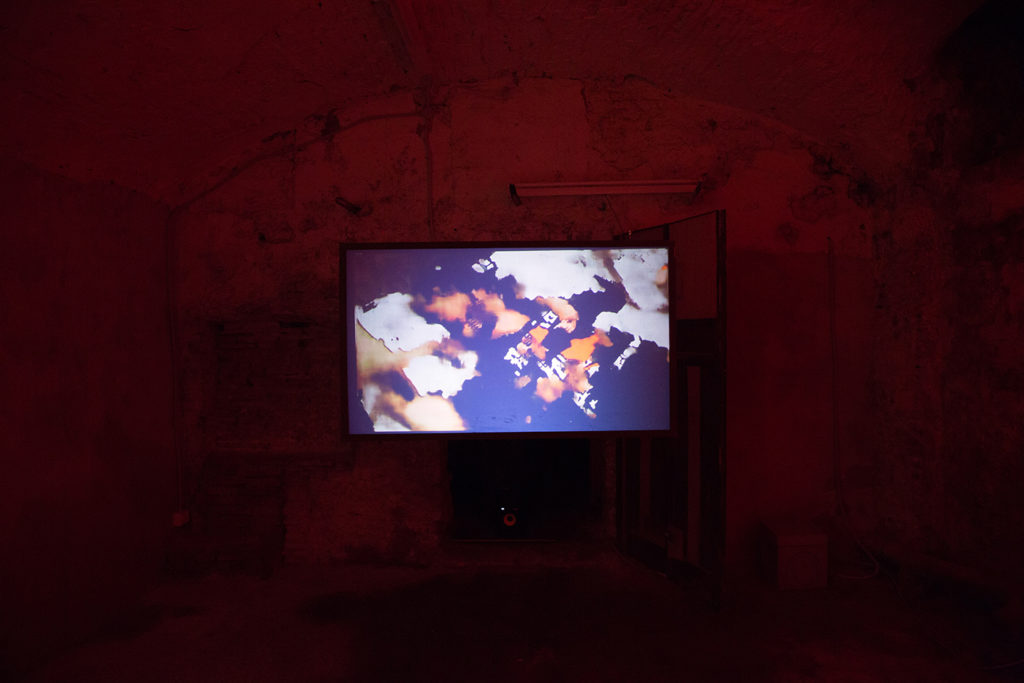
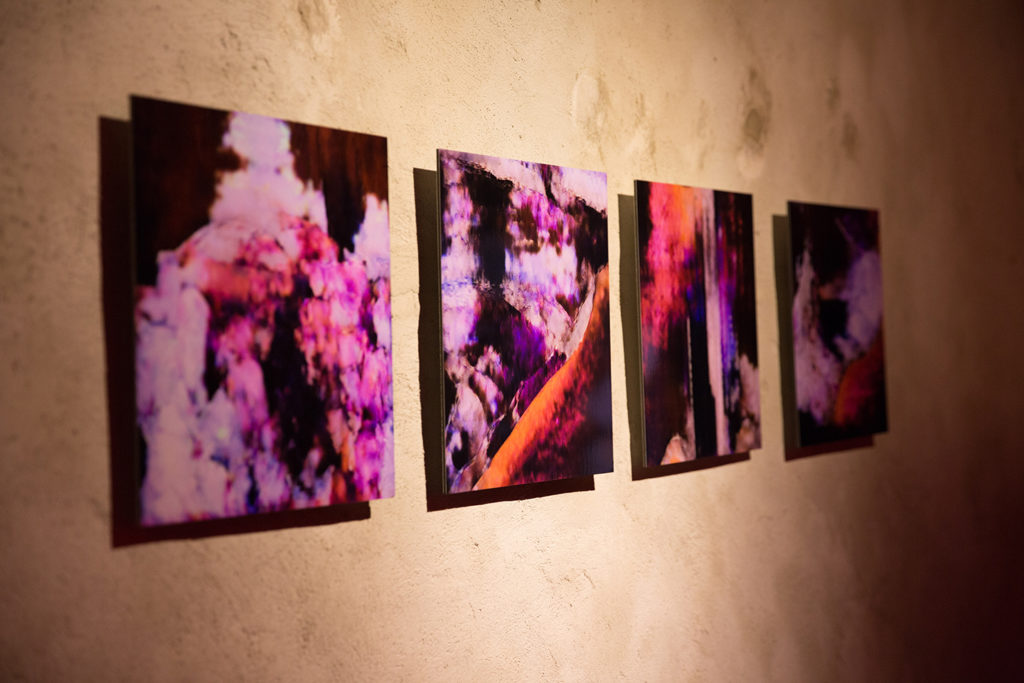
Multidisciplinary project Demand full Laziness (2018-2023) is dedicated to the contrast between “lost” time and “working” time. By celebrating the concept of laziness, the work represents a vindication of our right for idleness as opposed to the obsession we have for paid work, which a human being is afraid to lose, threatened by such phenomena as artificial intelligence, machine learning and complete process automation. Laziness here is an excuse to talk about and to rethink in a positive sense the concept of automation. In the time-context of the work the artist applies the concept of “time of experimentation” in different types of applied computational processes to artistic creation in order to see in which way and to which extent the machine can portray the reality. Demand full Laziness is another performative act carried out by Guido Segni’s machine, a five-year plan of automated production fulfilled by an algorithmic system in deep learning, a system capable of observing the context and of re-interpreting it aesthetically. In his work the artist explores the possible relations between work and leisure, between artistic gesture and digital production. The output, namely the artworks, are a proof of a cognitive act fulfilled by an algorithm, based the principle of double emancipation: machine’s emancipation from its creator and the artist’s emancipation from the work of material production. Images, objects, videos, sounds spread around the exhibition space are potentially on sale and can be purchased by collectors, automation fetishists and supporters of the project in order to contribute to the Patreon of the artist who “didn’t do anything” if not to relax in his bed.
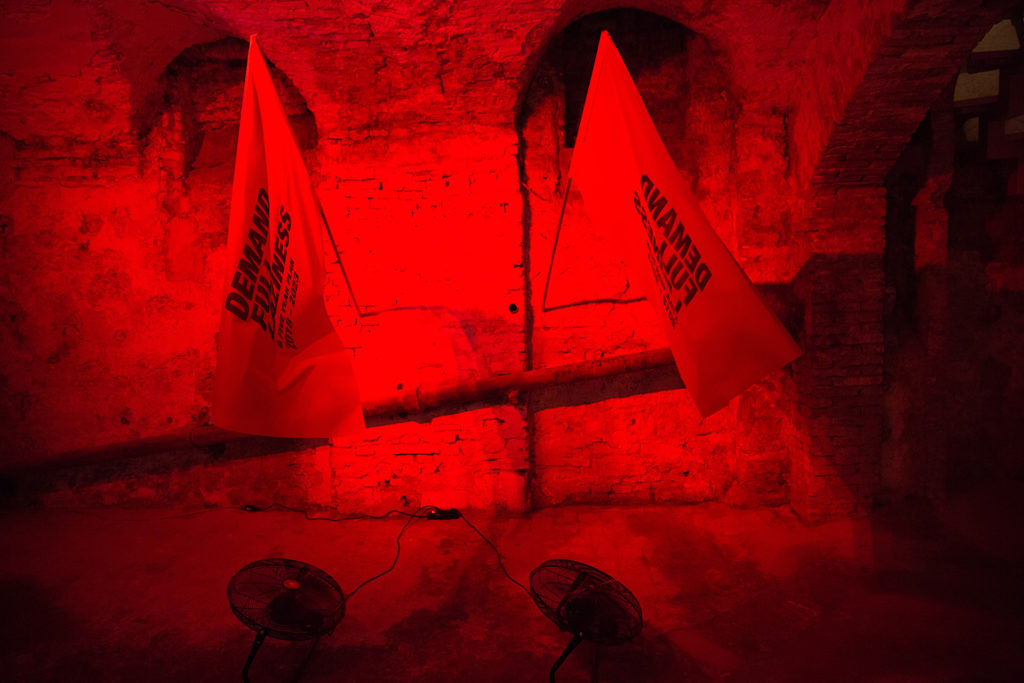
All the projects presented here show that for Guido Segni liberating artistic creation from the concept of time through algorithmic automation means to ensure the future for his works, the life time of which can exceed significantly the physical life of the artist. The question of technological obsolescence remains open, but what the artist suggests is a return to the primary function of technology, a function that is often dismissed and demonized by social and economic systems of our current postmodernity.
Critic text by Alessandra Ioalè e Marco Mancuso
In occasione di Arte Fiera la mostra sarà visitabile con i seguenti orari:
– sabato 2 febbraio dalle 11 a mezzanotte;
– domenica 3 febbraio dalle 16 alle 20.
SEDE: Adiacenze_Vicolo Spirito Santo 1/B_Bologna
PERIODO: 1 febbraio / 16 marzo 2019 ORARI: dal mercoledì al sabato 11.00-13.00 e 16.00-20.00 (lunedì e martedì su appuntamento) INFO: tel. 3335463796 – 3473626448 – info@adiacenze.it – www.adiacenze.it
Immagine di copertina: Guido Segni “A Quiet Desert Failure” – Installation view – Photo by Luciano Paselli. Tutte le foto della mostra allestita sono di Luciano Paselli
Guido Segni vive e lavora in Italia, all’estero e in Internet nelle intersezioni tra arte, cultura dei nuovi media e allucinazioni digitali. Co-fondatore del gruppo Les Liens Invisibles, ha esposto internazionalmente in gallerie, musei (MAXXI Rome, New School of New York, KUMU Art Museum of Talinn) e festival di arte contemporanea e nuovi media (International Venice Biennale, Piemonte SHARE Festival, Transmediale). Ha recentemente vinto una menzione onoraria al Festival Transmediale di Berlino (2011). Artista e Webdesigner, si occupa di arte e nuovi media dalla fine degli anni ‘90. Ha scritto articoli e recensioni per le più note riviste di settore (Neural, Digicult). Insegna all’Accademia di Belle Arti di Carrara. Segue laboratori pratici e corsi di formazione legati al mondo della produzione digitale e multimediale. Ultime esposizioni: “A New Social Contract”, curated by Elena Giulia Abbiatici for OFF Biennale, Cairo, November 28 – December 29 2015; “Object” | Pixxelpoint media art festival curated by Igor Štromajer, Nova Gorica and Gorizia , November 27 – December 4 2015; “(in)exactitude in science” @ The Wrong: New Digital Art Biennale, curated by Filippo Lorenzin and Kamilia Kard, November 1– January 31 2016; “Ego Update. Die Zukunft der digitalen Identität” curated by Alain Bieber, NRW-Forum, Düsseldorf , September 19 – January 17 2016; “Random Access Memory” Media Art Festival, Art Museum Arad, Romania, October 17 – November 17, 2014; “Reality check” curated by Filippo Lorenzin, Spazio ULTRA, Udine, October 4 – November 15 , 2014; “Pics or it didn’t happen” online solo exhibition at HOC Gallery, July 15 – October 15, 2014. https://guidosegni.com/
RASSEGNA STAMPA
- TUTTO BOLOGNA/7. DA FANTOMOLOGIA AL CUBO UNIPOL A GUIDO SEGNI DA ADIACENZE di Cristina Principale su EXIBART
- ARTE E INTELLIGENZA ARTIFICIALE A BOLOGNA di Valentina Tanni su ARTRIBUNE
- GUIDO SEGNI. FINO ALLA FINE di Federica Fiumelli su JULIER ART MAGAZINE
- Guido Segni tra arte, tecnologia e tempo presso lo spazio Adiacenze di Bologna di Mara Vittoria Tagliati su FORMEUNICHE
- Le migliori mostre in corso a Bologna dopo Arte Fiera su ZERO BOLOGNA
- Arte City 2019: What the future brings … on ARTIFICIALIS
- GUIDO SEGNI. FINO ALLA FINE su ARSHAKE
- GUIDO SEGNI – FINO ALLA FINE su DIGICULT
- Perché perdere tempo lavorando? Le riflessioni di Guido Segni in mostra a Bologna su ARTSLIFE
- GUIDO SEGNI: FINO ALLA FINE su ZERO BOLOGNA
- GUIDO SEGNI. FINO ALLA FINE su ARTVIBES
- Fino alla fine – Il tempo in mostra a Bologna su THE WALKMAN MAGAZINE
- Segnalazione su LaRepubblica
- Segnalazione su Il Resto del Carlino
- Segnalazione su Arte.it
- Segnalazione su SEGNO
- Segnalazione su ARTE.GO

